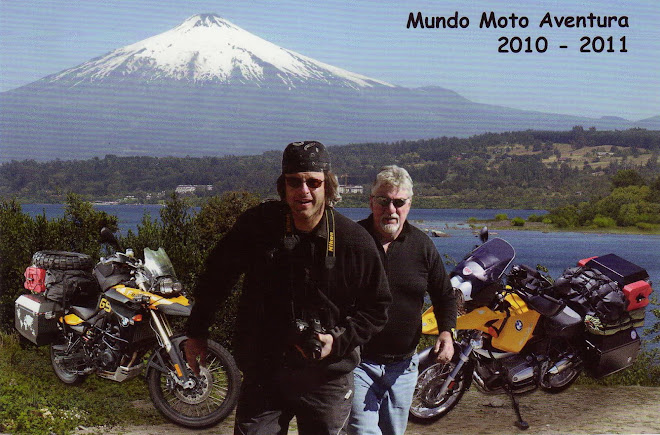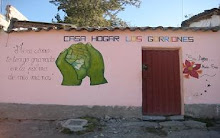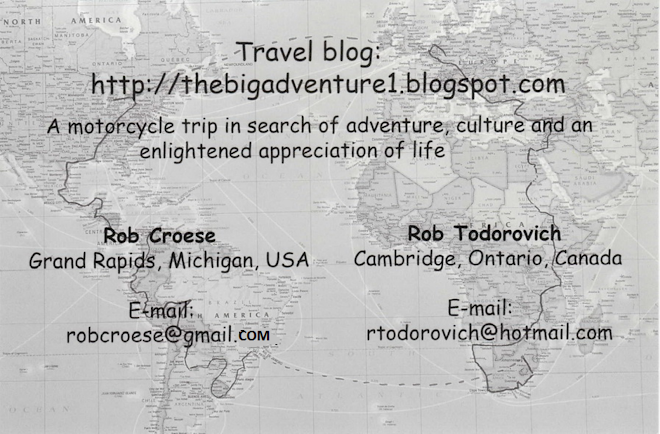Courtyard of the Casa Grande hostel where we stayed. This was a very basic hotel, but being able to park the bikes right outside the room is a luxury in Cuzco.
Although I have been here many times (the last three times by motorcycle) I always find new things to see and experience, The city is nestled in the mountains at an altitude of more than 10,000 feet (3,000 meters) and is surrounded by Inca remnants as well as Spanish Colonial buildings and artifacts. Cuzco is located at an easy one-hour flight from Lima.
Famous biker pub in the Plaza de Armas, "Norton Rats." Our blog sticker now proudly adorns the door as you enter and the mirror behind the bar. We also have personalized the thick guest book for around-the-world bikers..
RobT This morning was spent catching up on blog posts and setting up a tour of the city and surroundings. There are a number of places that are a must see: the main Cathedral which houses more than 400 old paintings of the Cusqueña School, some of the side streets with well-preserved Inca walls, Qoricancha (Sun Temple), Sacsayhuamán, Q'enqo, Pucapucara and Tambomachay.
Cuzco
Plaza de Armas in Cuzco
The 17th century Cathedral, built between 1556 and 1669, is shaped in the form of a cross if seen from the air. It was built on top of the foundation of the palace of Inca Wiracocha. Within the church there are some interesting pieces of art, such as the Peruvian version of the last supper with a guinea pig and chicha on the supper table.
The Colonial Cathedral.
Qoricancha. The church of Santo Domingo envelopes what was once the Inca Temple of the Sun. When the Spanish came they demolished the Inca temple and used the foundation and the stones of the Inca walls to build the church. You can see where the Inca stones meet the colonial stone work.
The dark stone to the bottom and right of the church is a fine stone wall carved and constructed by the Incas.
Inca stone as the base and the colonial stonework built on top. The Spaniards had a very difficult time destroying all the Inca work.
Inca floor stones (bottom) meet colonial stonework (top).
The La Merced (Our Lady of Mercy) church.
Sacsayhuamán. Built on a hilltop overlooking the city of Cuzco. During Inca times it was a fortress, which included a Sun Temple and a parade ground. The stones in the construction are some of the largest and heaviest used in pre-Hispanic America, weighing between 128 and 200 metric tons. The precision of the stonework in fit, rounded corners and the fact that they were angled inward, all allowed the structure to withstand earthquakes.Sachsayhuamán
You can see the size of some of these stones.
The ceremonial stone at Q'enqo was in the form of a monkey. The Inca thought this stone connected the deceased to the sky.
A small remnant of the Inca Trail runs from left to right just above the ruins in this photo.
This place was a sort of post for messengers and travelers along the Inca trail.
This fountain, Tambomachay, above the city of Cuzco supplied the city with fresh water via underground aqueducts from 5 miles away. The water coming out of the two spouts in the middle of the picture has been measured by scientists and the amounts are always identical.































No comments:
Post a Comment